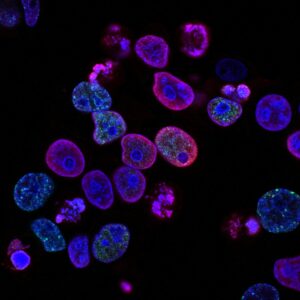Introduction
Imagine you’re reading a recipe book. Each recipe outlines the ingredients and steps needed to create a dish. In the same way, each living organism has a unique ‘recipe,’ written in a code, that makes it what it is. This code is stored in DNA and deciphered by the science of genetics. It’s like the ultimate cookbook for life itself!
What is DNA?
Let’s start with the basics: DNA, or Deoxyribonucleic Acid, is the molecule that carries the genetic information. Think of it as a twisted ladder, where each step represents a pairing of building blocks called “bases”: Adenine (A), Thymine (T), Cytosine (C), and Guanine (G). This sequence spells out the instructions for making and operating an organism.
Genes: The Individual Recipes
A gene is a specific segment of the DNA sequence, kind of like a single recipe in a cookbook. Each gene provides the instructions for a particular feature—say, the color of your eyes or your ability to roll your tongue. When genes are expressed, they’re read by the cell and converted into proteins, the ‘dishes’ that carry out various functions in your body.
Heredity: Passing Down the Cookbook
One of the most crucial aspects of genetics is heredity—the way genes are passed down from parents to offspring. You inherit a mix of genes from both your parents, which is why you might have your mom’s smile and your dad’s knack for playing the guitar. This process ensures that each person (or plant, or animal) is a unique blend of their ancestors.
Mutations: Typos in the Recipe
Sometimes, the genetic code can experience ‘typos,’ or mutations. These can occur naturally due to errors during cell division, or they can be induced by external factors like radiation or chemicals. While some mutations are harmful, others can be beneficial and drive evolution, providing an advantage in specific environments.
Genetic Diversity: A Vast Array of Flavors
Just as a culinary cookbook includes a wide range of recipes, the genetic ‘cookbook’ boasts an incredible diversity of genes. This diversity is what makes populations adaptable and resilient. It’s the reason why, even among siblings, everyone is unique.
Modern Discoveries: Beyond Mendel’s Peas
While early genetic research started with simple experiments on pea plants, modern genetics employs a range of sophisticated techniques. Scientists use DNA sequencing to read the genetic code and CRISPR technology to edit it. These advances have enormous implications for medicine, agriculture, and even ethics.
Real-world Applications
From genetic counseling to personalized medicine, the applications of genetics are far-reaching. Understanding one’s genetic makeup can provide crucial insights into potential health risks. In agriculture, genetically modified organisms (GMOs) are designed to be more resistant to pests or to yield more nutritious crops.
Why It Matters
Genetics doesn’t just help us understand who we are; it offers the tools to change the course of diseases, protect the environment, and even tackle world hunger. As we unlock the secrets of the human genome and the genomes of other species, we pave the way for innovations that can transform the future.
Summary
Genetics is like a vast, intricate recipe book that outlines the building blocks of life. It helps us understand how organisms are made, how they function, and how they inherit traits. As technology advances, we’re gaining the tools not just to read this book, but to rewrite it in ways that can benefit humanity.





